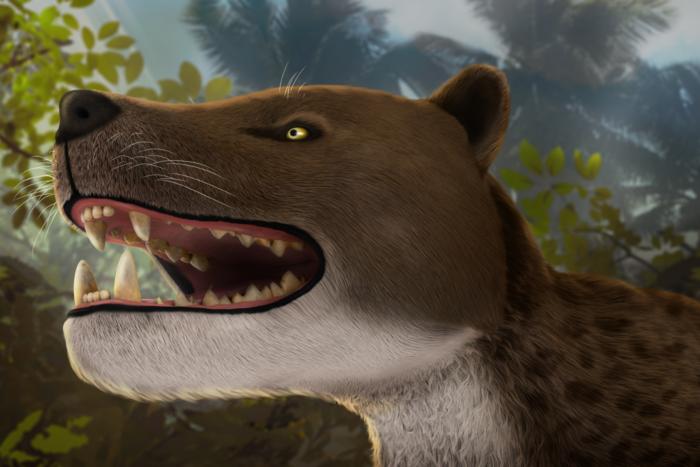Archaeologists have announced a rare and extraordinary discovery made in the Egyptian desert.
Scientists found the nearly complete skull of a new 30-million-year-old “top apex” predator.
“Just as we were about to conclude our work, a team member spotted something remarkable —a set of large teeth sticking out of the ground,” paleontologist Shorouq Al-Ashqar, from Mansoura University and the American University in Cairo, said in a statement.
Al-Ashqar was the lead author of a study published Monday in the Journal of Vertebrate Paleontology.
The “fearsome carnivore” is a new species of ancient Hyaenodonta: a deadly and agile mammal the size of a modern-day leopard.

Known as a Bastetodon, the animal had sharp teeth and a powerful bite to rip into its prey, including the hyraxes, early elephants and hippos, and primates that lived in the former forest of Fayum.
Hyaenodonts hunted in African ecosystems after the extinction of the dinosaurs.
Bastetodon was named for the cat-headed Egyptian goddess Bastet, who symbolized protection, pleasure, and good health. It was also an acknowledgment of its cat-like snout and the region where the skull was found.
But, in addition to this remarkable finding, the researchers were able to understand more about a new species discovered more than 120 years ago.

The group Sekhmetops, lion-sized hyaenodonts also discovered in the rocks of the Fayum, had been placed within a European group. Sekhmetops was named to honor the lion-headed goddess of wrath and war.
Now, researchers say it actually belonged to a group of hyaenodonts that originated in Africa, like Bastetodon.
In 2019, paleontologists — including the new study’s co-author Dr. Matthew Borths — announced the discovery of hyaenodont fossils in Kenya had revealed a new species larger than a polar bear, named Simbakubwa kutokaafrika.

Relatives spread from Africa in waves and, by 18 million years ago, their relatives were among the largest mammalian meat-eaters to ever walk the planet.
Climate and tectonic shifts in Africa opened the continent to the relatives of modern cats, dogs, and hyenas. And, the carnivorous hyaenodonts went extinct.
“The discovery of Bastetodon is a significant achievement in understanding the diversity and evolution of hyaenodonts and their global distribution,” Shorouq noted.













